10 New And Strange Reasons To Love Black Holes
A black hole is a mysterious and hungry creature. But they do more than just consume anything that comes too close. Black holes are behind the biggest explosion in space, shoot boomerangs, and create their own planets.
They also harbor strange mysteries. When black holes die, what happens to everything they ate? Why did a black hole flash in 2019 when science argues that they cannot flash? New discoveries could have spectacular answers.
10 MIND-BLOWING THINGS BLACK HOLES DO (OTHER THAN SUCK)
10A Star Turned Into Space-Pasta
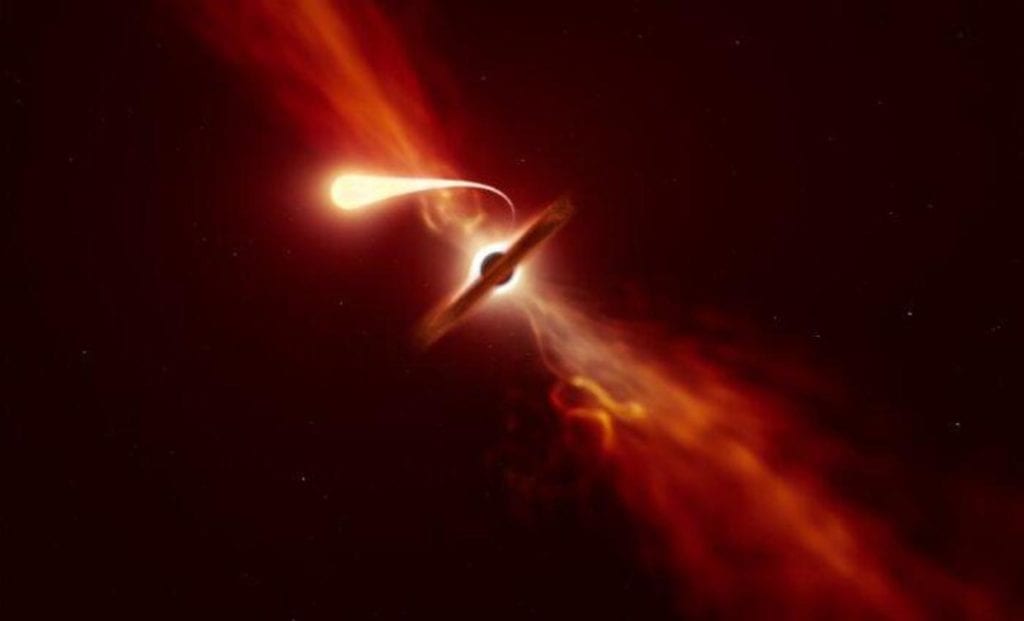
A star perished in 2019. One half blew into space. A black hole shredded the other half into long tendrils and munched them. This coined the foody phrase of “death by spaghettification.” As peculiar as that was, the event was also unique for reasons other than deserving a dollop of pasta sauce.
When a star dies, it releases a flash of energy known as a tidal disruption event. In this case, it was both the closest tidal event near Earth (215 million light-years away) and the clearest. Once astronomers detected it, they watched for months—in incredible detail—how the black hole tore the star in half.
The devastation revealed a clue about where tidal flashes come from. While the whole story is still a bit hazy, they are definitely connected to the debris leaking from a failing star.[1]
9This Black Hole Shoots Boomerangs
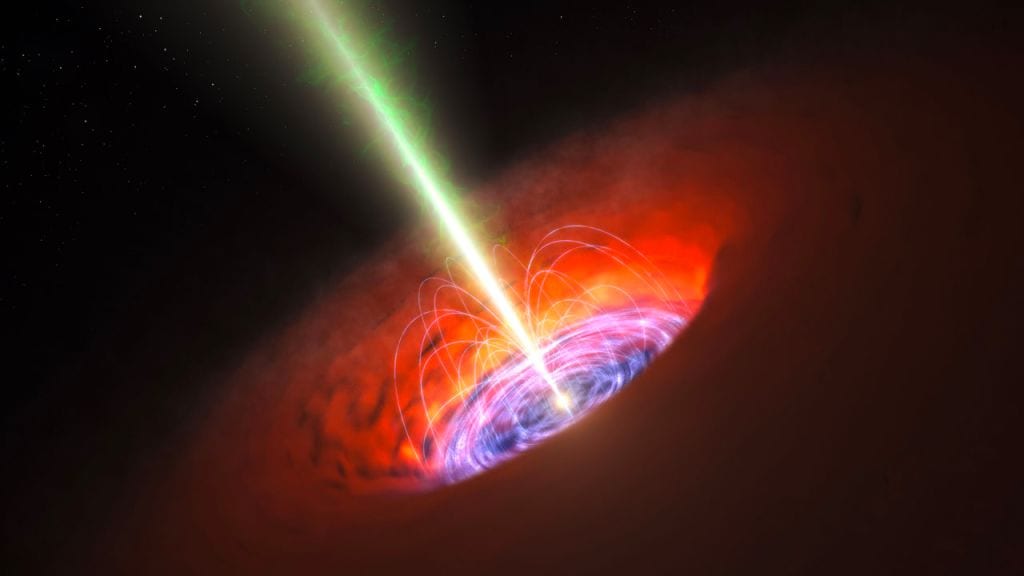
Around 17,000 light-years from Earth, a black hole is nibbling on a star. The pair is simply known as XTE J1550-564. At first, there was nothing surprising about them. Black holes snack on starlight. Old news. But in 2020, researchers looked at old X-ray images of XTE J1550-564 and something did not add up.
In an attempt to get to the bottom of the strange data, the information was fed into a computer simulation. It revealed how some of the light made a dash for freedom. This, in itself, was not unusual. When light is trapped in the accretion disk (the dust swirl around a black hole), then it can still get away. But the light that escaped from XTE J1550-564 did something strange.
Normally, when light makes a successful escape, it bounces against the disk and then shoots into space in a straight line. But these beams first curled back towards the black hole. When the light eventually reflected off the disk, they looked like boomerangs. The phenomenon had not been seen before or since.[2]
OUR LATEST VIDEOS
8Black Holes Hide In Plain Sight
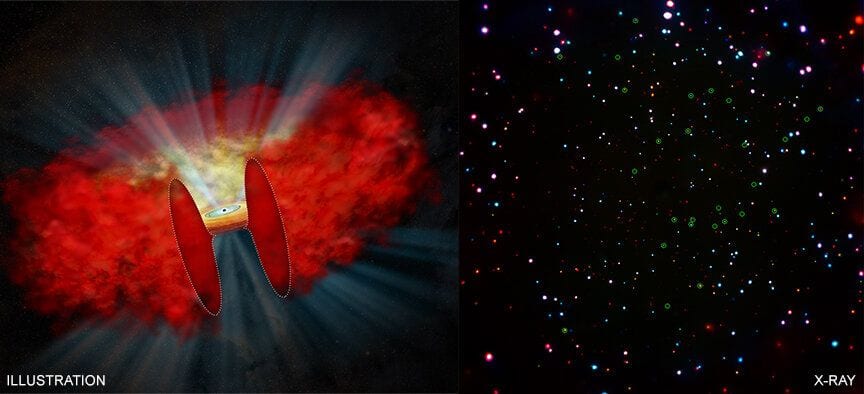
Some black holes are shrouded in dark dust. These so-called cocooned black holes are tough to spot but by any estimate, there should be crowds of them out there.
In 2020, scientists combed through the Chandra Deep Field-South (CDF-S) image to find more cocoons. This X-ray picture covers a section of the southern sky in great detail. Many things in CDF-S had already been identified, including 28 points that were listed as galaxies or black holes without cocoons.
But the 28 were imposters.
Not for long, though. When the chart was compared to optical and infrared observations of the same area, their bright signals were undeniably those of black holes with cocoons. The X-ray could not pierce the dimming effect of the dust which explained why they resembled other stellar objects. The discovery also suggests that plenty of records, similar to CDF-S, are probably littered with these black holes that masquerade as something else.[3]
7A Unique Trio
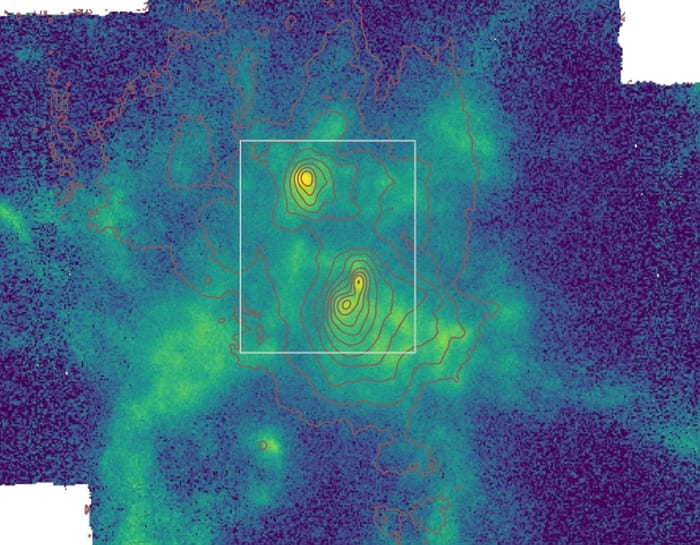
Back in 1983, astronomers considered NGC 6240 something of an odd pickle. The galaxy had a strange shape and an unusual infrared glow. The wisdom of the day concluded that NGC 6240 was actually two galaxies. The peculiar shape and brightness showed that they were colliding.
Each galaxy brought their own supermassive black hole along. By the time they were spotted, the black holes hovered closely together at the centre of NGC 6240.
2019 swung by and astronomers looked at the galaxies with better equipment. They were surprised to find a third black hole at the centre. Their peers from the 80s probably missed it because the black hole was dormant (the other two consumes matter). But whatever the reason, its presence suggested that the merger involved three galaxies.
A triple galactic smash is chicken-tooth rare but not unheard of. What makes this situation so unique is the closeness of the three black holes. They orbit each other inside a small area of 3,260 light-years and the active pair is barely 645 light-years apart.[4]
6A Clue That Explains The Oldest Black Holes
A mystery surrounds the earliest black holes. Thought to be the remnants of the first stars that had died, nothing could explain why some of these black holes grew into huge objects. Indeed, when one was discovered in 2020, it weighed 1 billion times the mass of our Sun. But being born soon after the Big Bang was not what made this guy special. It provided a strong clue about its own growth and size.
The black hole is holding six galaxies hostage. The setup resembles a spider’s web with filaments running between the black hole and the galaxies. Wherever the filaments cross, the galaxies prosper. Whatever feeds them (probably gas) is being funnelled by the threads. In the same way, the web can inflate black holes to enormous proportions by nurturing them inside a gas-rich environment.[5]
TOP 10 BIZARRE NEW FINDS ABOUT BLACK HOLES
5The Biggest (And Weirdest) Space Explosion
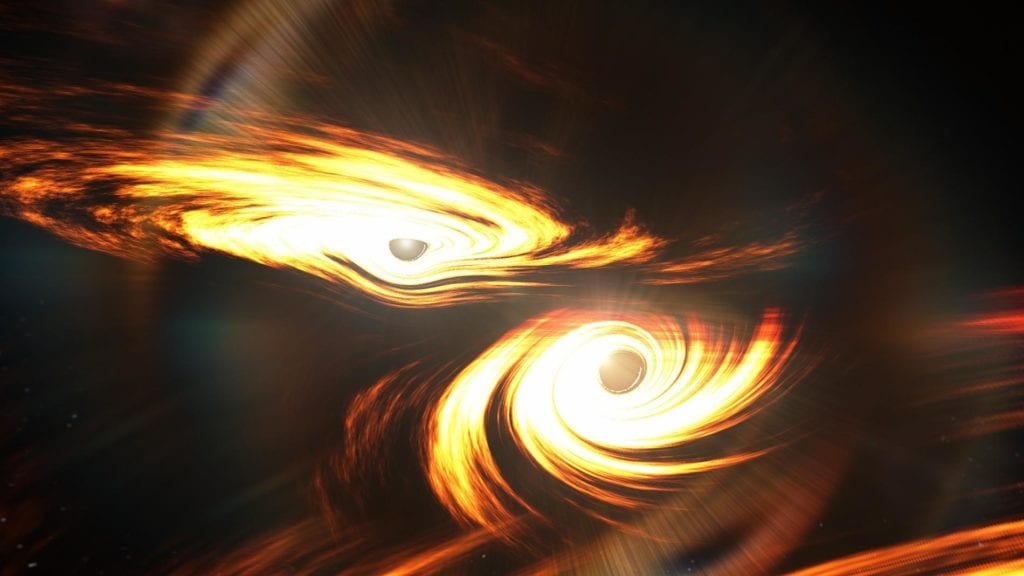
In 2019, something from space rattled the Earth. Two observatories detected the gravitational waves and homed in on the source. What they found was something bizarre, record-breaking, and impossible.
The signal, labelled GW190521, was produced when two black holes collided 7 billion years ago. The explosion created a single, bigger black hole. Curiously, one of the original two was most likely also the result of a merger between other black holes. But this cosmic pile-up was not the only strange thing.
The explosion was the most powerful blast ever recorded in space. The force equalled a million billion A-bombs detonating every second for 13.8 billion years. The final black hole was 142 times bigger than the Sun, making it an intermediate-sized black hole. This was significant because black holes of this size had previously only been possible in theory. But one of the original pair was plainly impossible.
Calculated at roughly 85 solar masses, it broke a scientific law stating that no black hole could exist in that range. In order to form, it would need a star between 60 and 130 times larger than the Sun. But therein lies the problem. When these stars die, they go out as supernovas and not as black holes.[6]
4Something Destroyed A Black Hole’s Corona
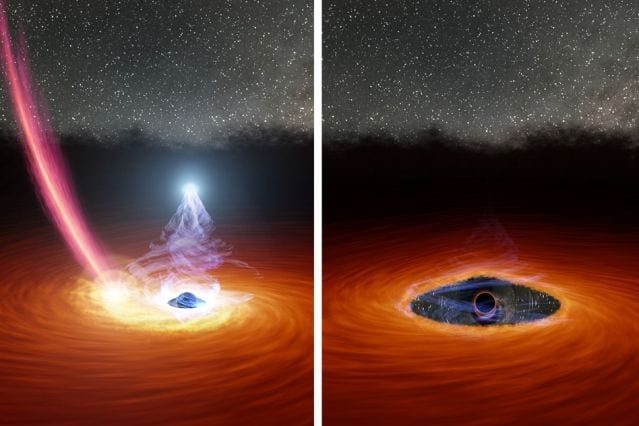
Things went normal for a while. A galaxy named 1ES 1927+654 swirled around a black hole, as most galaxies do. The black hole was visible due to its corona (a ring of hot particles that orbit most supermassive black holes). There was nothing special about it.
1ES 1927+654 did not like being ignored. In 2018, it gave astronomers a mystery that remains unsolved to this day. For some reason, the black hole’s corona flared forty times its normal brightness. Then, just as suddenly, the flash was gone.
The galaxy got its wish. Telescopes from all over the world turned to 1ES 1927+654, hoping to see more. They were not disappointed. In less than a year, the corona dimmed at a rate that should have taken millennia. While the experts were unprepared for such a speedy version, they had a feeling that this was not a quicker-than-normal life cycle. Something else was destroying the corona.
According to one theory, a star collided with the black hole. The star cracked open like an egg, which caused the initial flash. The smash disrupted the black hole’s magnetic field, the very thing holding the corona together. Robbed of its stability, the corona then rapidly fell apart and caused the black hole to darken.[7]
3The Flash Mystery
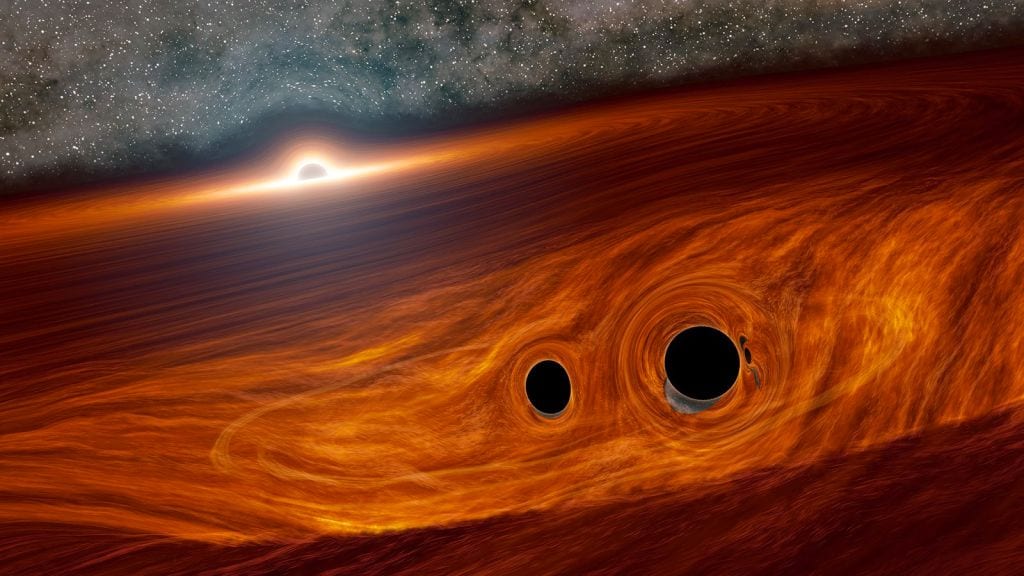
Remember GW190521, the biggest and weirdest space explosion of all time? Something else happened about a month later in the same region and researchers are not sure whether the two events are connected. The black holes that collided had no fiery coronas, so nothing about the crash should have been visible.
But there was a massive flash.
To solve the riddle, researchers added a quasar to the story. Quasars are supermassive black holes that release blasts of energy. But the flash was too spectacular, even for one of these giants.
Instead, the theory goes that the two smaller black holes became trapped in the gas ring that surrounds their supermassive cousin. At one point, the pair merged and created the GW190521 signal. The force of the merger kicked the new black hole through the ring and disturbed the gas enough to trigger a delayed reaction (the flare).
This explains why the flash happened 34 days after the GW190521 signal but nothing is certain. There is an equal chance that the two events have nothing to do with each other.[8]
2They Have Blanets
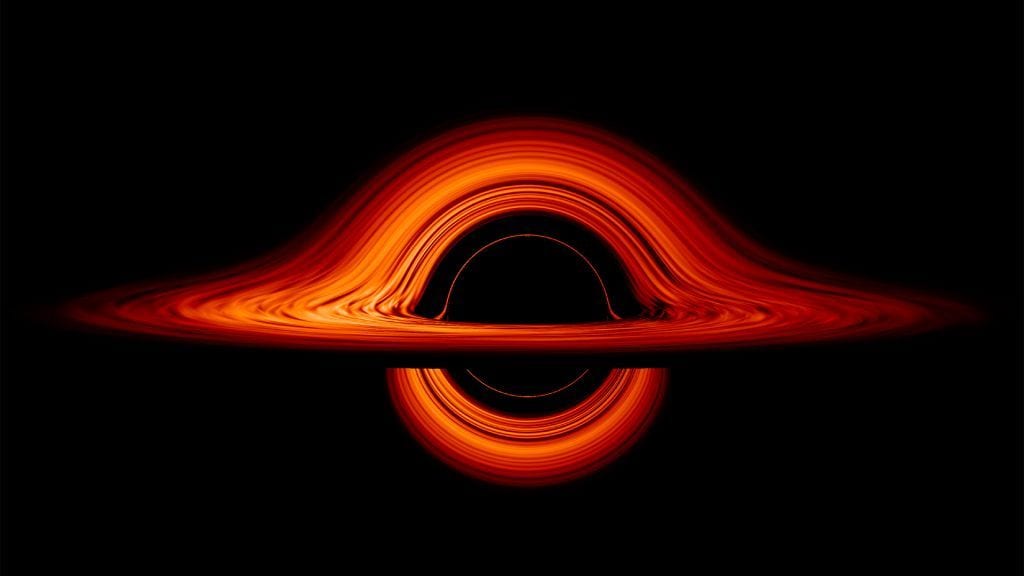
Planets are born from the wheel of dust that swirls around a star. Blanets, on the other hand, are worlds that form inside the dust ring that orbits a black hole. Some blanets are rocky and Earth-like but nearly 10 times bigger. Others are gas giants like Neptune.
Blanets have never been found.
But a study in 2020 showed that the strange worlds must exist. A requirement for planet-building is ice. Acting like a glue, ice makes dust particles stick together. Once a clump develops enough gravity, it pulls more dust and other clumps together. Eventually, the object grows into a planet.
Some black holes have a “snow line.” Beyond this region, things are cold enough for ice and blanets to form. In the Milky Way, the conditions are so perfect that thousands of blanets are probably orbiting the black hole at the centre of our galaxy.[9]
1Black Holes Release Their Victims As Curves

When Stephen Hawking announced that black holes die, other physicists were excited to learn everything they could about the phenomenon’s life cycle. Then the leading expert on black holes, Hawking claimed that black holes evaporate. But this led to a seemingly unanswerable question.
When a black hole nears the end of its life and disintegrates, what happens to all the stuff it had consumed?
Mathematicians uncapped their whiteboard markers and did a few calculations. They concluded that the stolen “information” simply disappears—which violated about a gazillion sacred laws in physics. Another theory suggested that the information leaked back into space as curves. But nobody could prove things either way.
Recently, physicists turned to advanced computers and mathematical tools to solve the standoff. They created realistic black holes, sped up their evolution and watched their deaths closely. This was only a simulation but incredibly, it matched one of the theories. When the black holes neared their doom, the information seeped from them in curves.
Comments